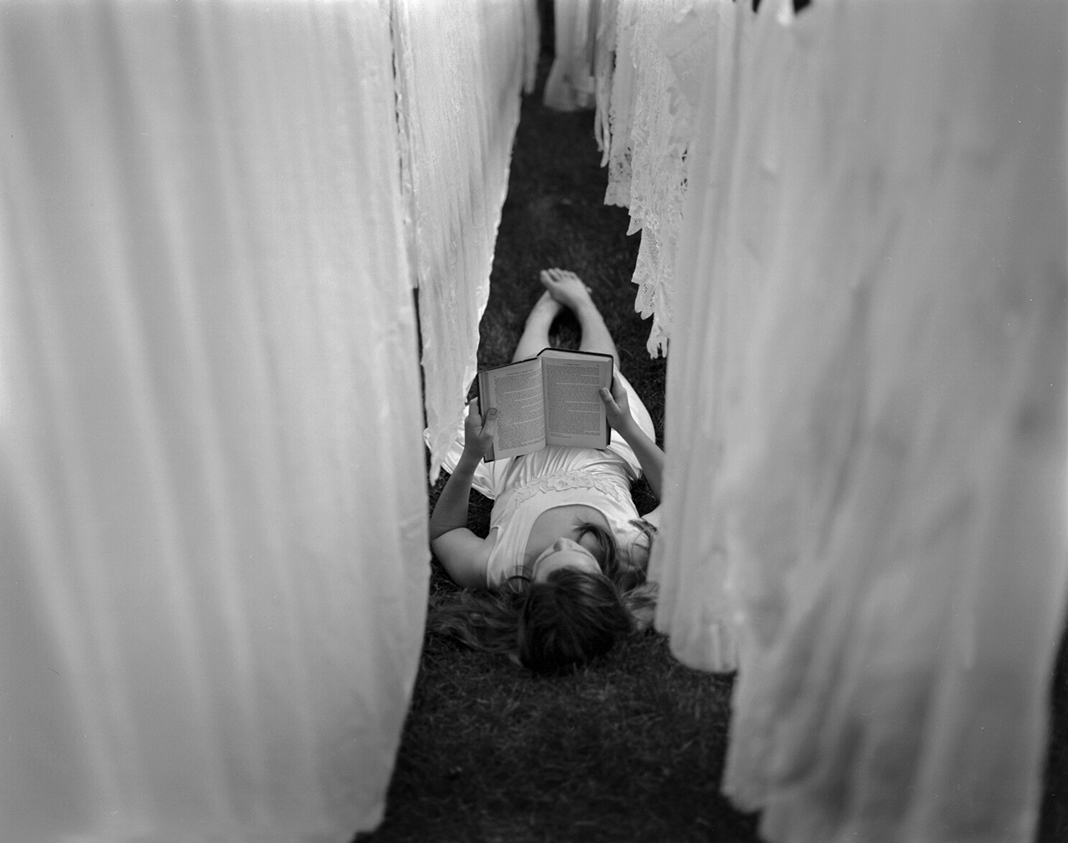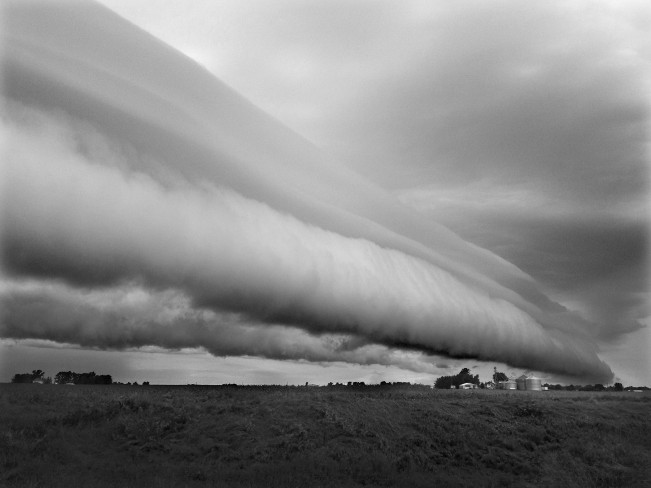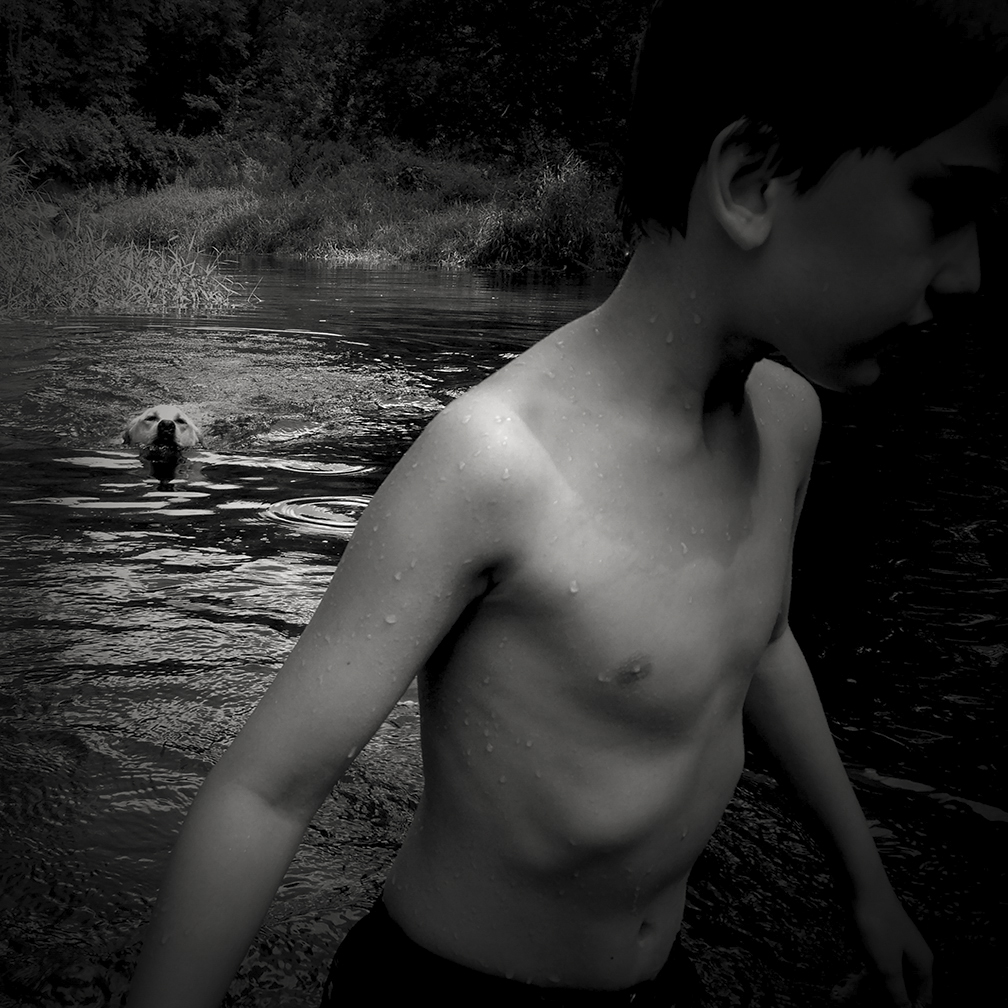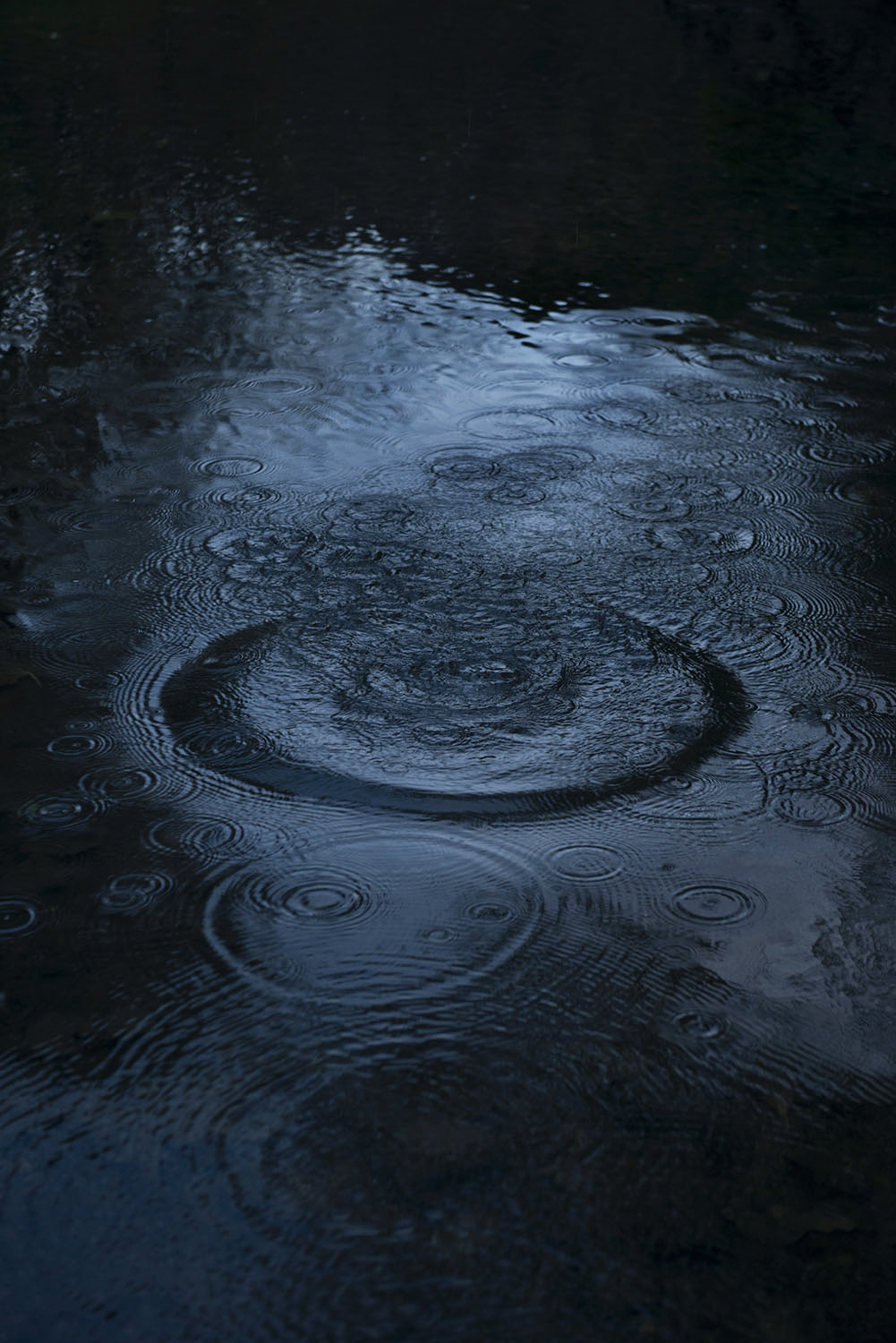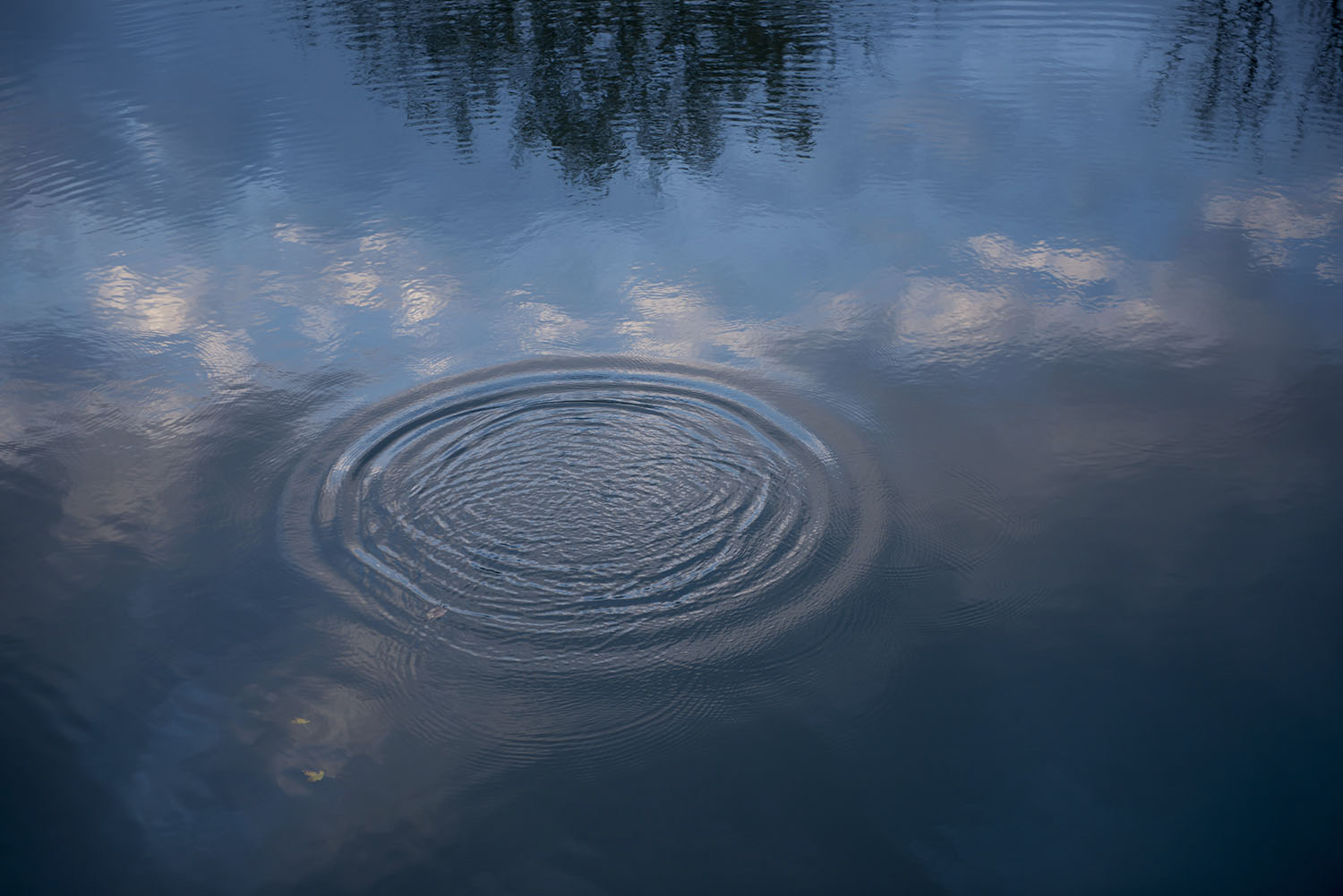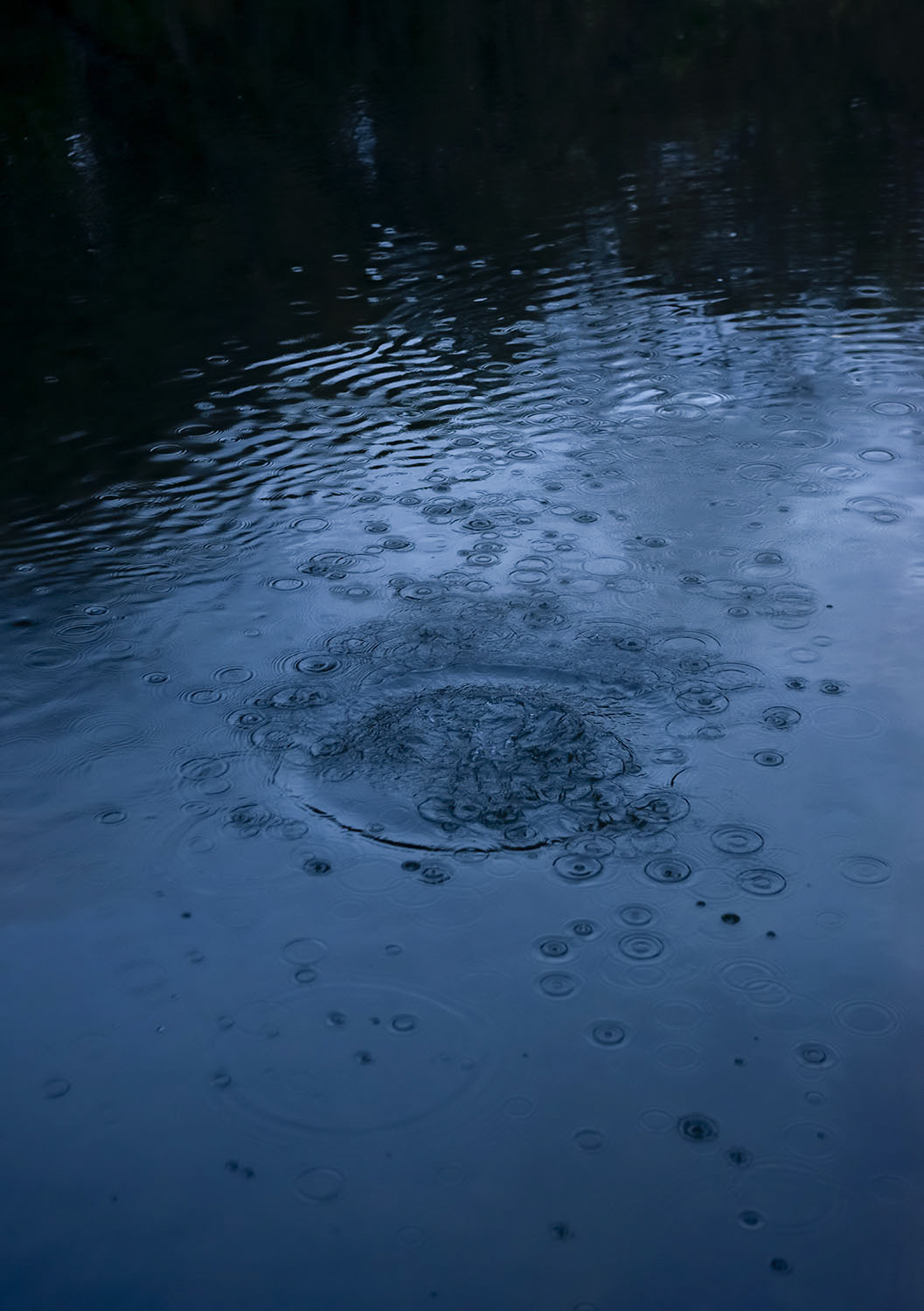Photographers on Photographers: Denise Orlin and Laura Husar Garcia
This month, we feature our annual August project, Photographers on Photographers, where visual artists interview colleagues they admire. Thank you to all who have participated for their time, energies and for efforts. Today we are happy to share this interview with Denise Orlin’s interview with Laura Husar Garcia. – Aline Smithson and Brennan Booker
I caught up with Laura Husar Garcia earlier this summer to talk about her projects, process and preparation, hoping to get a better sense of how she views her work and the craft. She did not disappoint and provided a wide range of insights. It’s one thing to make beautiful images, but to also infuse one’s photography with the richness of meaning can make one’s art transcendent. Laura’s images, both visually stunning and intensely personal, elevate the art form. I first encountered Laura’s work at one of her shows in Chicago and instantly connected with her images. Her series from “Wishes,” which focuses on ripples in water, gave me a sense of calm. But more lies beneath the surface. Once one comes to understand Laura’s story and her process of making photos, one begins to see that these images convey a profound love for her family and the places she’s lived.
Laura Husar Garcia has documented the intimacies of the human spirit for more than 25 years. Her photography has been exhibited widely, including Fotofever at the Carrousel du Louvre in Paris, France, The Biennial of Fine Art and Documentary Photography in Barcelona, Spain, The Polish Museum of America and The Rangefinder Gallery in Chicago, Photo Independent in Los Angeles, CA, PhotoNOLA in New Orleans, LA, among others. Laura is the first-place winner of the International Julia Margaret Cameron Award in the 2017 landscape category. She is also the co-winner of a 1st place Community Grant from the Illinois Humanities Council and a Photolucida Critical Mass top 200 finalist. Laura’s photographs have been published in several books, including “America At Home: A Close-up Look at How We Live” and “Santa Fe Bohemia: The Art Colony 1964-1980”. Her work has also been published in The New York Times, National Geographic Magazine and Newsweek, Slate Magazine as well as several other publications.
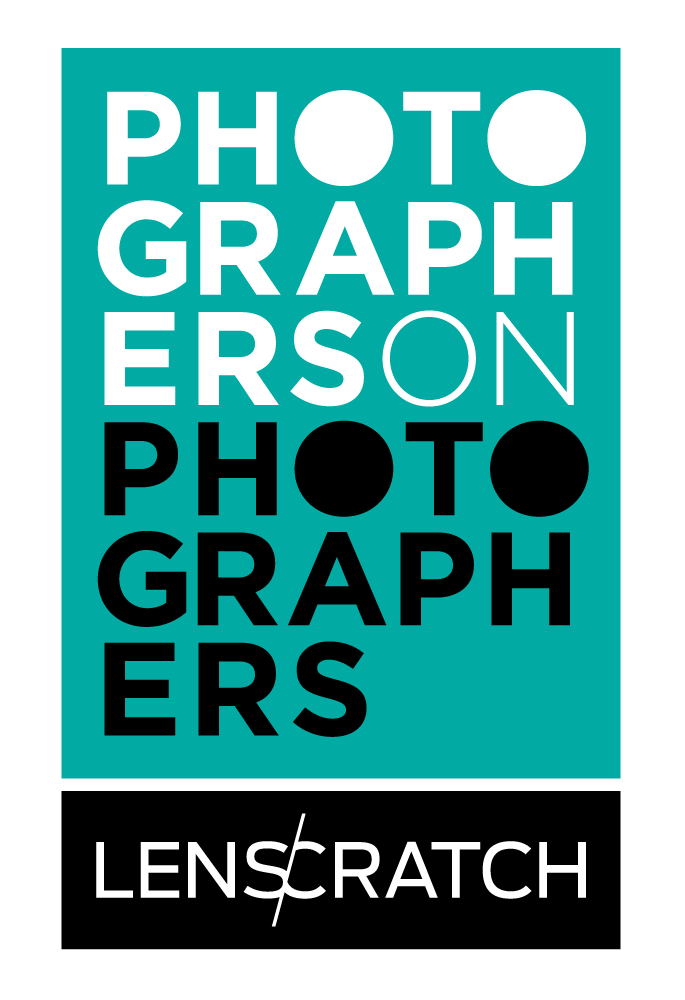 Denise Orlin is a photographer and photography instructor in Chicago, IL, where she was born and raised. Denise picked up a film camera for the first time at summer camp. From capturing shared moments with her friends to carefully processing her work in the darkroom, Denise fell in love with photography. After college, Denise worked for acclaimed Chicago photographers Jean Moss and Steve Grubman, an experience that helped her study the art and hone her craft. For several years, Denise worked as a portrait photographer, and now she is turning her focus toward fine art photography. Her work explores universal themes of love, loss, longing, and hope.
Denise Orlin is a photographer and photography instructor in Chicago, IL, where she was born and raised. Denise picked up a film camera for the first time at summer camp. From capturing shared moments with her friends to carefully processing her work in the darkroom, Denise fell in love with photography. After college, Denise worked for acclaimed Chicago photographers Jean Moss and Steve Grubman, an experience that helped her study the art and hone her craft. For several years, Denise worked as a portrait photographer, and now she is turning her focus toward fine art photography. Her work explores universal themes of love, loss, longing, and hope.
Her work has been featured in Elle Décor and Luxe Magazines. She has exhibited her work locally in Chicago, nationally and Internationally. She received an Honorable Mention in the Julia Margret Cameron Fine Art category in 2018 and 2019.
Denise Orlin: What drives you to make photos?
Laura Husar Garcia: I’ve always been a visual storyteller. As a child, I spent a lot of time wandering Chicago with my father, who was a writer. On Sunday afternoons, he used to spin the family globe while I closed my eyes and pointed my finger. Wherever the globe stopped was the Chicago neighborhood we explored as a family for the day. I photographed the places we went with my little Kodak Instamatic camera, tagging beside him, wide-eyed and filled with a spirit of adventure and curiosity. Visually telling people’s stories as well as reflecting my own feelings with photographs became a part of my life language. From early on, I referred to my camera as my “third arm”. Now that I occasionally work with large format and alternative chemical processes, my methods have slowed down, and I’ve given more white space to the necessaries of life in front of me, primarily in motherhood, etc. My image-making has shifted from documenting what I see in front of me to telling the stories that are bubbling from within. It’s a slower process, but incredibly satisfying when it happens. In this chapter of my life, what drives me to make photos is a deep yearning to express myself. “Wonder” is one of my big creative words, and it continuously pops up when I create. No matter how challenging life gets for me or others around me, especially during this crazy chapter of our country, there is still much good to focus on and beauty to be seen. I guess that’s part of my creative calling.
DO: For me personally, I sometimes have a “photographer’s block”, how do you come up with ideas for your projects?
LHG: I totally understand that. I can’t stay ‘on’ all the time. I think it’s natural to occasionally need to withdraw and have a life pause for a battery recharge. This is why artists tend to live near each other or some join collectives or critique groups, etc. They help each other through creative concepts and processes. When I’m not making art, after a while, my life feels out of order and I’m basically not doing something that is a primal, innate part of my innermost being.
I’ve noticed that artists tend to create whatever they are most searching for in their lives. Whether it’s deep adventure, grit or whatever form of beauty that is pertinent to them, etc. For me, at least, it’s always been that way. I strived to reconnect with my roots when photographing nuns. After moving to Chicago, I searched for beauty in every day life when making art deep in the forest. Like a yin to my yang, my projects are often a reach for both expression and balance.
DO: In your series, “Longing”, you explore a universal theme-loss. Almost anyone can relate to it in some way. I wonder, when you are creating a series like that, are you imploring your audience to consider their own encounters with loss, or is it more of a personal expression unique to your own experience with loss?
LHG: When viewers connect with one of my images or a body of work, I’m honored to hear their stories, because the creative process doesn’t end in the making, it continues in the sharing of work, and the transformation that occurs from feeling impacted by it. Just like ripples, the movement continues, even after it transforms. The perspective circle potential is limitless. That’s the crux of what I do, it’s sometimes just a statement but mostly it’s a conversation with the viewer, in addition to my own personal narrative. The sense of longing from my Saudade series was something I had to do, perhaps to soothe the firm heart tug that wasn’t resolvable (at the time) in any other way, besides art-making.
DO: “Wishes” also has a deeply personal meaning behind it. Can you tell us about it and your experience creating this series?
LHG: I’ve always been drawn to the concept of wishes, as an act of conversation with the seen and unseen. The creek and pond behind our cabin is where I often go to recharge my batteries. I suppose the best way to explain is to share a portion of my artist statement from my Wishes series:
“Several years ago I collected hundreds of smooth, flat stones for my mother when she became a widow. I placed them in a simple box for her to keep. Whenever we felt the need, we walked down the hill and made wishes in the pond below the family cabin. The box of wishes burned in a massive house fire, yet the stones remained. This gave me a continued sense of hope, enabling me to make new wishes from what once was, while rebuilding our home. With each toss of a stone, the universal symbol of the circle came forth in a consistent response with expanding ripples, a reminder of the eternal and infinite.”
I am currently working on a new series, White Wishes, which is very light and bright. The work is about healing, illumination and awakening. I can often be found in the creek, with my boots or hip waders, skipping stones and sending forth specific wishes while photographing them. I find myself yearning to express good health, clarity, transparency, peace, etc. while I have many life plates spinning, and a couple occasionally falling. There are a few people I love who are struggling with their health, both mental as well as physical. I’ve been in caretaker mode and am often decompressing in the river, near my home, continuing to make wishes. Over the years this process has become a cathartic act of hope, my zen and my calm. It releases life’s worries and concerns while transforming them into something new, filled with goodness, potential and transformation.
DO: Your work has been exhibited around the world. Is there a specific exhibit that has meant the most to you?
LHG: I’m always deeply honored to share my work, and grateful for the opportunity. I suppose one of my most memorable exhibits was Fotofever, at the Carrousel du Louvre in Paris in 2015. The day after our show opened, the terrorist attacks took place, where 130 people were killed. Everything shut down temporarily, and those of us who were exhibiting our work (I was showing with Fabrik Projects of Los Angeles), bonded over our shared experience. Priorities and perspectives were made clear at that time, that love and human connections are more valuable than anything else. Another exhibit that meant a lot to me was this year at the Wichita Falls Museum of Art, in Texas with the Shootapalooza Collective, titled Nocturnes and Other Murmurations. We shared our work as a group to honor Judy Sherrod, our fearless collective leader, who passed away two years ago. She was a force for good, and we all poured our hearts into that amazing exhibit.
DO: You currently live in/near Chicago. Do you feel like this city’s aesthetic or spirit has impacted your work? If yes, how? And if no, where do you find your inspiration?
LHG: My surroundings absolutely impact my work. I grew up with a forest in my front yard and a wooded, hilly ravine behind the house. I’ve lived in various places, including a 10-year-stint in the Sangre de Cristo mountains of Santa Fe, NM and another chapter in the Andes mountains of Ecuador. When I returned to Chicago after many years of adventure, I went through “wilderness withdrawal” on a consistent basis. Leaving the city for the woods became a salve, where there was room to breathe more deeply and exhale. I love the city and all it has to offer, especially the people and culture, yet I also need to dive into wilderness for a deep, creative recharge frequently. It’s really about balance, for me. An ideal world at this point in my life includes having one foot in the woods for art-making and another foot in the city for cultural connections, galleries, museums, artist friends and collectors, etc. There are countless ways to be inspired, and personal relationships with other artists is one of my greatest joys. So the city is absolutely where that’s at.
DO: Are there any photographers who have had an influence on your work?
LHG: I deeply admire many, including: Sally Mann, Sebastian Salgado, Henri Cartier-Bresson, Vivian Maier, Beth Moon, Keith Carter, Graciela Iturbide, Susan Burnstine and so many more, including countless contemporaries and artist friends that inspire me on a daily basis with their passionate artistic expression. The photographers I worked with back in my early newspaper days in Santa Fe as a photojournalist, as well as the women in my current collectives, have inspired me the most. They’ve kept me inspired and afloat in immeasurable ways, and I’m grateful for each one of them. I can’t imagine doing creative life without some of these amazing artists.
DO: You work with a wide range of formats and photographic processes. What’s your preference and why?
LHG: I love film, working with a traditional wet darkroom, plastic toy cameras, digital, large format, all of it. It’s a joy for me to have the time to slow down and work with medium or large format. The process forces me to be patient, which is a wonderful exercise and the quality is amazing. I’m working with digital recently, however, with my Wishes series. Using a lighter, digital camera while standing in running water just plain makes sense. I love the unpredictability of a Holga or Brownie, too, which is always so much fun.
DO: Any advice for emerging artists?
LHG: My advice is to get out there and make whatever art that makes your soul sing. Not overanalyze things, keep it simple and let go of perfection. Enjoy the process, from start to finish, not just in the making of the image, but also in the sharing, planning, and selling. Let mistakes be great teachers. Laughter helps. A rising tide lifts all boats, so community is key. Hang out with as many creatives as possible that you admire, not only photographers but all kinds of artists, whether painters, poets, writers or musicians. Support each other in your successes. We’re the ones who dare to dream and live this wondrously crazy lifestyle, and our commonalities keep us imbued and fluid in our process.
Statements for featured work:
Wishes
Several years ago I collected hundreds of smooth, flat stones for my mother when she became a widow. I placed them in a simple box for her to keep. Whenever we felt the need, we walked down the hill and made wishes in the pond below the family cabin. The box of wishes burned in a massive house fire, yet the stones remained. This gave me a continued sense of hope, enabling me to make new wishes from what once was, while rebuilding our home. With each toss of a stone, the universal symbol of the circle came forth in a consistent response with expanding ripples, a reminder of the eternal and infinite. My favorite time is dusk, when water reflects the day’s end with a deep blue. Entitled Wishes, this work stems from a blend of melancholy and yearning, focusing on the past, present and future. For me, the blue that quietly develops at dusk is soothing, contemplative and spiritual. The physical expression of tossing stones in the water is an act of meditation with the seen and unseen. My work explores many moods of the color blue, which is most often associated with soothing calm.
Saudade (Sense of Longing)
Having lived in several different cities and countries, I’ve packed and unpacked countless boxes and suitcases. It’s been difficult to say goodbye to tribes of friends and chosen family. The Portuguese word saudade has deeply resonated with me for many years, aptly defining a feeling I’ve carried after moving from place to place. My images explore a sense of saudade, a longing for home and a deep yearning to find what I once had. After my grandmother died, her simple house dress brought me comfort when I could no longer visit her. When we lost our family home due to severe weather, my father’s books were one of the few things that were salvaged. They brought me enormous comfort and a sense of place during transition and loss. For years I’ve dreamed of finally being home, my forever place, where I can root my children as they grow, plant perennials and measure growth charts on the door frame.
Posts on Lenscratch may not be reproduced without the permission of the Lenscratch staff and the photographer.
Recommended
-
Linda Foard Roberts: LamentNovember 25th, 2025
-
Arnold Newman Prize: C. Rose Smith: Scenes of Self: Redressing PatriarchyNovember 24th, 2025
-
Spotlight on the Photographic Arts Council Los AngelesNovember 23rd, 2025
-
The Aline Smithson Next Generation Award: Emilene OrozcoNovember 21st, 2025
-
MATERNAL LEGACIES: OUR MOTHERS OURSELVES EXHIBITIONNovember 20th, 2025

